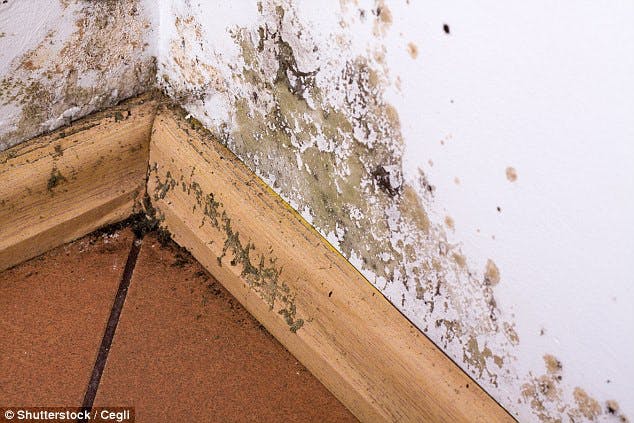How to spot dampness?
Having areas of dampness appearing on our internal walls is not only unsightly and unhealthy, depending on the cause, it can also be expensive to solve, so it is important to identify the source early and get it treated. There are three types of dampness that can have an impact on our properties – condensation, penetrating dampness and rising dampness, here we are looking at rising dampness.
What is rising damp?
Rising damp occurs when groundwater soaks into a wall or floor, in the same way, water would soak into a sponge. To prevent this properties need to have a damp proof course and membrane installed to seal and protect them, therefore, stopping water from causing damage. A damp-proof course is built into a wall above ground level with a damp-proof membrane laid beneath a concrete floor. Newer houses will have a damp-proof course and membrane although houses built before 1875 may not.
Damp prevention materials can and do get damaged over time, which can result in rising damp. Other issues that can affect a damp proof course are that the level of the ground is higher than the damp proof course or there is an issue or blockage with drainage. The key signs of rising damp to look out for include:
- Damp stains above the skirting board
- Crumbling or rotting skirting boards
- Discolouration or staining on walls
- Deposits causing blistering on walls
- Black mould
- Peeling wallpaper
- Rotting floor boards
- Raised floor coverings
- Smell – you can often smell damp even if you can’t actually see it

Damp and mould can also cause harm to those in poor health or asthma patients, as the spores can be airborne and irritate the lungs. So, if you suspect you may have a damp issue, look for any of the signs above and look to get it treated as soon as possible, this will not only save you money in the long run but will improve the look of your home and help towards improving health.
Negative Effects of Dampness
Structural Damage
The possibility of structural damage is one of the main risks connected to moisture. Constant moisture exposure can cause wood to deteriorate, weakening a building's structure. When damp conditions persist, wooden structures—like floor joists and roof rafters—are particularly vulnerable to decay. This puts the entire structure at risk of instability, which could lead to costly repairs or, in the worst situation, structural collapse.
Mould
In addition to causing physical harm to the property, moist surroundings serve as a haven for the growth of mould and mildew. These fungi can spread quickly, taking hold on walls, ceilings, and other surfaces. They prefer moist, humid environments. Not only is mould unsightly, but it can also be harmful to your health, particularly if you have allergies or asthma. In otherwise healthy people, mould spores can aggravate pre-existing medical conditions and lead to respiratory problems.
Pests
Pests drawn to the softer, more moist wood include rodents and wood-boring insects. Dampness can also draw these pests. Infestations have the potential to worsen the structure's condition and pose new health risks.
Decreased Property Value
The market value of properties with a history of moisture issues frequently drops. Purchasing a home with known damp problems puts prospective buyers on the defensive because they expect expensive repairs. Improving or preserving property value requires swiftly addressing damp issues.
Poor Air Quality
Poor indoor air quality can be attributed to damp environments. Airborne spores released by mould and mildew can be inhaled and cause allergies, respiratory problems, and other health problems. Those who already have respiratory issues may find this especially problematic.
Decreased Energy Efficiency
A home's dampness can reduce its energy efficiency. Less efficient insulation and damp walls mean that more energy is needed to heat or cool the area. This inefficiency may lead to increased energy costs and harm the property's overall environmental impact.
Contact us if you need help today
Homeowners and property managers must comprehend and mitigate the full range of hazards associated with moisture. Proactive damp-proofing techniques, timely repairs, and routine maintenance are essential elements of a plan to safeguard the property's structural integrity and occupants' health.
Seeking expert advice and acting quickly to address any damp concerns you may have is crucial.
Call us today on 07852 229017 and speak with one of our experts about damp-proofing your home. We can also help with any renovations that may need doing as a result of structural damage. This includes any cavity of loft insulation in Swansea, Cardiff, Bristol, or South Wales.


